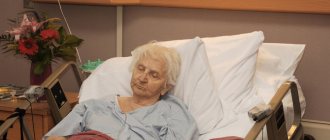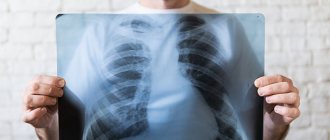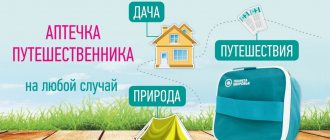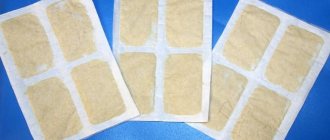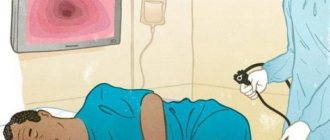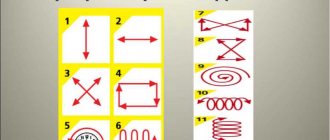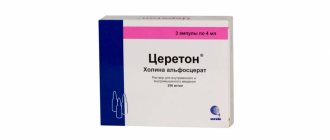Water procedures are hygienic and health procedures that involve the external use of water. Water has a very high heat capacity. By comparison, the heat capacity of water is 28 times higher than the heat capacity of air. To better compare these indicators, it should be said that at the same temperature of air and water, our body in water will lose 30 times more heat than in the open air.
Due to the fact that water has a high heat capacity, is capable of exerting a mechanical effect on our body, and also dissolving various mineral salts that enhance its beneficial effects, it is used for medicinal purposes.
Before moving on to the main fundamental features of water procedures, let’s briefly get acquainted with some of their types.
THERAPEUTIC POOL
There are two types of therapeutic pool: open (outdoors) and indoor (indoors). It is filled with either sea water or water with mineral salts dissolved in it. The purpose of the pool is to conduct various types of therapeutic gymnastic exercises (aqua fitness), underwater spinal traction (traction therapy), etc.
HYDRATERATURE BATHS
The action of a hydrotherapy bath is based on the chemical composition and temperature of the bath water. Mechanisms can be used to create artificial water movement. Hydrotherapy baths are:
- mineral
Used with the addition of natural or artificially prepared mineral water. The combination of treatment methods with mineral baths is called balneotherapy. Diversity of chemical composition, i.e. the mineral salts used and the physical properties (water temperature) determine a different therapeutic effect. What is common to mineral baths is that the therapeutic effect of their use is due to a reflex-humoral influence. In other words, the effect of such baths is carried out through the blood and nervous system and is aimed at causing a reaction from the cardiovascular, nervous system, as well as endocrine glands, thermoregulatory and metabolic processes in the body.
- vortex
In them, with the help of a special pump, the mass of water is set in motion, which is a circular motion (vortex). The therapeutic effect of such a bath is due to massage (carried out by moving water masses) and the effect of the water itself on skin receptors. As a result, the blood vessels expand, which improves the supply of oxygen and nutrients to the organs through the blood (their delivery is facilitated). Whirlpool baths are mainly used to improve blood flow in the extremities (arms and legs).
A little about hydromassage.
Hydromassage is a massage with simultaneous exposure of the human body to warm water. This massage can be performed with or without immersion of the body in water. In the first case, massage is also called underwater. Hydromassage is an effective remedy for impaired lymph flow or injuries, for the treatment of chronic fatigue syndrome, diseases of the musculoskeletal system, for the elimination of edema, cellulite and sagging skin, during the recovery period after plastic surgery. The therapeutic effect is achieved by improving blood circulation in those parts of the body that are targeted by the massage while simultaneously applying water, which removes old skin particles and cleanses pores. Thus, the flow of oxygen to the desired areas increases.
- mud
Used to fill the bath with various types of therapeutic mud. They are usually prescribed for functional disorders of the cardiovascular system and joint damage. Gas and mud baths are prescribed for older people. Such baths are easier to tolerate than ordinary mud baths. In addition, such baths are effective in the treatment of peripheral vascular diseases.
There are also hydrotherapy baths for skin care (cosmetic), with the addition of essential oils (aromatic), etc. One way or another, all hydrotherapy baths are classified depending on the desired result.
THERMS
In other words, baths or thermal (hot) baths. The therapeutic effect is based on the effect of heat on the body, which stimulates sweating processes. This cleanses the skin pores and improves blood flow. In addition, inhaling hot air has a beneficial effect on the respiratory system. Thermal baths can be combined with aromatherapy and a contrast shower or swimming pool. Changing exposure to heat to exposure to cold pool water has a positive effect on the human nervous system and increases tone.
SHOWER
There are many types of shower. Among them, it is worth noting the Charcot shower - from a distance of 3-5 meters, a hot stream of water is first directed at a person, and then a cold stream of water. Scottish shower - similar to Charcot's shower, but two hoses are used: one with cold water, the other with hot water. The jets are alternately directed at a person from different directions, thus creating a constant contrast of hot and cold water. This type of shower is only suitable for trained people. Steam shower - a steam generator turns water into steam, which is sprayed onto the human body. Vichy shower - creates the effect of natural rain due to a large number of thin streams of water, which create zones of high ionization on the body. Rising shower - water jets are directed from bottom to top; used in the treatment of gynecological diseases. As can be seen from the above, the therapeutic effect of the shower is achieved mainly due to the contrast in the temperatures of the water jets, due to their strength and frequency.
It is also worth noting wraps, compresses bathing dousing .
Wraps and compresses are based on thermal effects (hot and cold compress, hot and cold wrap), as well as on the property of moist skin to better absorb healing ointments and medicinal substances.
Bathing combines the thermal effects of water (swimming in hot and cold waters), physical activity (swimming movements), and the mechanical effect of water on the body.
Pouring is based on a gradual decrease in the temperature of the water used for dousing. The main purpose of dousing is to prepare the body for water procedures that are more irritating.
Hardening in itself has a beneficial effect on our health. However, you should know that to achieve maximum effect (especially when it comes to longevity), you need to lead a healthy lifestyle. There is no point in hardening yourself if the principles of proper nutrition are not followed, there is no physical activity, and smoking and alcohol are an integral part of our lives. By the way, maintaining a healthy lifestyle concerns not only hardening, but also all other water procedures.
The most popular water treatments for soul and body
Baths
There are different types of baths - turpentine, with sea salt and herbs, soda, tonic and relaxing. Each has a specific effect.
The choice of water procedure depends on the goal they want to achieve:
- baths with algae extract and sea salt help in the fight against sagging skin and excess weight, calm the nervous system and are very relaxing;
- with medicinal herbs or orange peels, they warm well and have antibacterial properties;
- turpentine baths are effective for weight loss. Turpentine removes toxins from the body, tightens the skin and eliminates cellulite. Blood flow is normalized, capillaries dilate, thereby improving metabolism. Such baths should be taken under the supervision of a specialist;
- soda baths perfectly relax, help get rid of extra pounds, and eliminate skin irritation;
- essential oils will add variety, soften and moisturize the skin. Lavender promotes skin cell regeneration and is also an effective remedy for insomnia and headaches. Aloe moisturizes dry skin and has wound healing properties.
Shower
By influencing the active points of the body with a stream of water of varying power, you can increase immunity, get rid of cellulite and cure various diseases, including oncology. You need to start the procedure with warm water, gradually lowering the temperature. Shower gel with eucalyptus, mint or citrus will help invigorate you in the morning.
There are several types of shower:
- Charcot's shower is especially popular. A few sessions are enough to get tightened skin and an elastic body;
- circular shower. A man stands in the center of a shower installation. Horizontal jets of water under pressure are directed at the body from all sides;
- Scottish shower. Water jets from two hoses are alternately directed at a person: warm and cool water;
- Vichy shower. The body is irrigated with thin streams of water. Pressure and temperature vary. In this case, the person sits on the couch.
Hammam
The famous Turkish baths are characterized by soft, humid steam. In the steam room, the pores open well, the skin acquires a healthy tone and color, and toxins and impurities are removed. A great way to relax and unwind.
Sauna
In a Finnish steam bath, the temperature can reach 100 C, so you need to breathe calmly and slowly. After the visit, an improvement in appearance and general well-being is noted. Intense heat will ensure maximum cleansing of pores. The cells of the upper layer of the epidermis are renewed at an accelerated rate. Metabolism accelerates, lymph and blood circulation improves. Toxic substances are removed from the body through sweat.
Russian bath
Since ancient times, this water procedure was considered an excellent way to relax and get rid of diseases. The Russian bathhouse is distinguished by dry steam. Visiting her is especially recommended for colds.
Hydromassage
Professional hydromassage effectively fights cellulite and helps you lose excess weight. A half-hour session is enough for your skin to look beautiful and your muscles to relax after a stressful day.
Principles of water procedures
As we already know, there are many different types of water procedures. But in order for all of them to really benefit health, it is necessary to know their basic principles of their implementation. It should be added that all of them are common and universal for any type of water procedures.
- Any water procedure is prescribed as a course
To get results from water procedures, you need to carry them out regularly or in courses, depending on the type of procedure and the desired result. If you carry out water procedures with so-called “swoops”, then there will be no benefit from them, but there may be harm. One water procedure by itself will not have a strong effect and will not immediately bring the desired healing effect, while a course of water procedures has a therapeutic effect due to its systematic effect on the body and its response to the influence. It is important to understand here that even skipping one procedure can negate previously performed ones. Also, you cannot stop water treatments early without good reason. You must be confident in yourself and that you can complete the started course of water procedures to the end.
- The water procedure is carried out at the appointed time
Water procedures are different. For example, water treatments can have both a tonic and relaxing effect. It is better to carry out relaxing water procedures shortly before bedtime, so that your sleep becomes deeper and more sound, and tonic ones - in the morning to get a charge of vigor for the coming day. A hot bath, for example, should not be taken after a meal, especially if the meal was heavy. In general, it is better to carry out any water procedure 45 – 60 minutes after eating. It is not recommended to carry out water procedures after severe emotional overload. Physical overload is also undesirable before water procedures. On the other hand, it is useful to combine hardening water procedures with moderate physical activity.
- Duration of the water procedure
The water procedure, like any other, has its own duration, during which a positive effect on the body is created. Going beyond these limits to a lesser or greater extent reduces the positive effect to zero. But going beyond the limits can also have a negative impact on the body.
For example, let's take the effect of entering cold water. With the external influence of cold water on the body, we may notice that our skin turns pale. At this time, the vessels narrow, and blood from the periphery goes to the internal organs. This state of the body is called primary chills. This is a short-term phenomenon that soon passes. The blood returns to the periphery again, the vessels dilate, and the skin turns red. However, if you remain in the water after this, secondary chills occur. Unlike the primary chill, which had a positive effect on our body, the second one has already had a negative impact on it. If we often allow secondary chills, we risk acquiring chronic fatigue.
- Water procedures and emotional state
A state of rest is recommended during most procedures. In order for the body to concentrate all its forces on the response to the effects of the water procedure, it is necessary to try to exclude other irritants. Nothing should interfere, distract or cause discomfort during the procedure. After completing the water procedure, you should give yourself some time to rest. It is important to understand that any water procedure is stress for the body, to which it must respond appropriately. Therefore, keeping the body in a calm state during and after the procedure will allow you to achieve a greater therapeutic effect.
- Water procedures and sequence
When practicing water procedures, you should have patience and do everything gradually, consistently. This means that you should not immediately organize a shake-up. Do not think that the faster you start water procedures, the more effective they will be for your body.
For example, you decide to start hardening by dousing with cold water. To do this, you filled a bucket with cold water, went outside into the cold and tipped the entire bucket over yourself. After such a procedure, the average adult, accustomed to “greenhouse” conditions, will, at best, end up with a runny nose; at worst, he will suffer from pneumonia.
It is better to start with rubbing with a wet towel, and then move on to dousing, gradually reducing the temperature of the water. After this, you can start taking a shower, gradually lowering its temperature and increasing the time taken.
Getting the body used to certain water procedures is a long-term process, not a momentary one.
And one more thing: in order to achieve maximum effect, it is advisable to cleanse the skin before starting any water procedure, using, for example, a scrub or peeling.
Water procedures as a means of recovery after exercise
In order to increase the productivity of your workout, you need to choose the most optimal recovery method. The faster the body recovers, the more opportunities it will have to perform subsequent work and the higher its functional performance.
Hydrotherapeutic procedures (various types of showers) are widely used as a means of recovery after training and competitive stress. Hydrotherapy is especially important for athletes who train several times a day. The use of a shower is very effective between workouts, allowing you to relieve nervous tension, helping to relax the athlete’s muscles, thereby speeding up the process of recovery and preparing the body for the subsequent workout.
The effect of the shower is mainly due to temperature and mechanical irritation. Its physiological effect on the body depends on the strength of mechanical stimulation and the degree of deviation of the water temperature from the so-called indifferent temperature (+34 – +36°C).
Depending on the water temperature, showers are divided into:
- cold, with water temperature from 15 to 20 degrees;
— cool, water temperature ranges from 20 to 30 degrees;
- indifferent, temperature 34-36 degrees;
— warm, water temperature 37-38 degrees;
- hot, with this type of shower the water temperature should be above 38 degrees.
A warm shower has a calming effect on the body, usually used after training or in the evening before bed.
A hot shower (water temperature up to 45°C) has a tonic effect. Used during speed training. Duration of reception – 3 minutes. A hot shower can reduce the excitability of motor and sensory nerves and increase the intensity of metabolic processes.
A contrast shower is an alternation of hot (up to +45 °C) and cold (up to +18 °C) water. The duration of a hot shower is 30-40 s, a cold shower is 15-20 s (at temperatures below 10°C - up to 10 s). A contrast shower can improve muscle tone and the cardiovascular system; it is an effective means of recovery. The use of a contrast shower is advisable to stimulate the body, as well as to raise tone.
A cascade shower is a “water massage” in which a large amount of water (usually cold) falls from a height of up to 2.5 m. It helps normalize redox processes and increases muscle tone.
Charcot shower (jet shower) – water jet pressure of 1.5-2 atm., water temperature – 34-36°C. It has a tonic effect, used as an independent procedure or after a massage. The duration of the procedure is 2-3 minutes (until the skin turns red).
It is worth noting that all means of recovery must be selected jointly by the coach and the doctor, since this depends on the stage of preparation, competition and training conditions, the nature of the loads, the individual characteristics of the athlete’s body, the timing of the competition and the degree of fatigue of the athlete.
Head of the Department of Sports Medicine
State Healthcare Institution "Regional Medical and Physical Education Dispensary"
Izbyakova Svetlana Gennadievna.
Warnings and contraindications
When carrying out one or another water procedure, you always need to monitor your condition. The water procedure has a beneficial effect if after it (depending on the type of procedure) you are cheerful and cheerful or calm and relaxed, pain is reduced or completely eliminated.
If headaches, pain in the heart area, insomnia, loss of appetite, fatigue occur, the inflammatory process is activated, pain intensifies - this is a reason to take a number of measures. Firstly, you should reduce the time of the water procedure. Secondly, the interval between water procedures should be increased. If these measures do not lead to the elimination of unpleasant sensations, then you should cancel the water procedures and contact a specialist.
Water procedures also have their contraindications. They can only be determined by a doctor in each specific situation, but by default the general contraindications are: heart attack, stroke, hypertensive crises, infectious diseases, thrombophlebitis.
Author: Ekaterina Solovyova
Please note that the information presented on the site is for informational and educational purposes only and is not intended for self-diagnosis and self-medication. The selection and prescription of medications, treatment methods, as well as monitoring their use can only be carried out by the attending physician. Be sure to consult a specialist.
Hardening
Hardening is a scientifically based system of using environmental factors to increase the body's resistance to colds and infectious diseases.
Hardening does not cure, but prevents illness, and this is its most important preventive role. A hardened person easily tolerates not only heat and cold, but also sudden changes in external temperature, which can weaken the body’s defenses.
As a means of increasing the body's defenses, hardening arose in ancient times. In almost all cultures around the world, hardening was used as a preventive means of strengthening the human spirit and body. Much attention was paid to physical exercise, hardening and body hygiene in Ancient Greece and Ancient Rome. There was a cult of health and beauty of the body here, so hardening was included in the system of physical education as an integral part. Particular importance was attached to hardening in Rus'. Since ancient times, the Slavic peoples have used a bathhouse followed by rubbing with snow or swimming in a river or lake at any time of the year to improve health.
The main thing is that hardening is acceptable for any person, i.e. It can be practiced by people of any age, regardless of the degree of physical development. Hardening increases the performance and endurance of the body. Tempering procedures normalize the state of the emotional sphere, make a person more restrained, balanced, give vigor, and improve mood. According to yogis, hardening leads to the merging of the body with nature.
There are no medical contraindications to hardening, excluding acute febrile illnesses. It is a deeply mistaken opinion that hardening procedures are contraindicated for weakened people.
PRINCIPLES OF HARDENING
- Systematic use of hardening procedures at all times of the year, without interruption. Carrying out hardening procedures should be clearly fixed in the daily routine. Then the body develops a certain stereotypical reaction to the applied stimulus: changes in the body’s reaction to the effects of cold, which develop as a result of repeated cooling, are fixed and preserved only under a strict regime of repeated cooling. Breaks in hardening reduce the body's acquired resistance to temperature influences. In this case, there is no rapid adaptive response. Thus, carrying out hardening procedures for 2–3 months and then stopping them leads to the fact that the hardening of the body disappears after 3–4 weeks, and in children after 5–7 days.
- Gradual increase in the dose of irritating action. Hardening will bring a positive result only if the strength and duration of the hardening procedures are increased gradually. You should not start hardening immediately by wiping with snow or swimming in an ice hole. Such hardening can be harmful to health. The transition from less strong influences to stronger ones should be carried out gradually, taking into account the state of the body and the nature of its responses to the applied influence.
- The sequence of hardening procedures. Preliminary training of the body with more gentle procedures is necessary. You can start with rubbing, foot baths, and then start dousing, while observing the principle of gradually decreasing temperatures.
- Taking into account the age and individual characteristics of the human body. Hardening has a very strong effect on the body of people starting it for the first time. Therefore, before starting hardening procedures, you should consult a doctor. Taking into account the age and condition of the body, the doctor will help you choose the right hardening agent and advise how to use it to avoid unwanted consequences.
- The complexity of the use of hardening procedures. Natural environmental factors that are widely used to harden the body include air, water and solar radiation. The most effective is the use of a variety of hardening procedures that reflect the entire complex of natural forces that daily affect a person. The effectiveness of hardening procedures increases significantly if they are combined with sports exercises. At the same time, it is important to ensure that the amount of stress on the body is also different.
- All hardening procedures should be carried out against a background of positive emotions..
Violation of these rules leads to the absence of the positive effect of hardening procedures, and sometimes to hyperactivation of the neuroendocrine system and its subsequent depletion.
Hardening activities are divided into general and special. General ones include a proper daily routine, balanced nutrition, and physical exercise. Special ones include hardening with air (air baths), sun (sunbathing) and water (water procedures).
SUN HARDENING (sunbathing)
Sunbathing for the purpose of hardening should be taken very carefully, otherwise instead of benefit it will cause harm (burns, heat and sunstroke). It is best to sunbathe in the morning, when the air is especially clean and it is not too hot, and also in the late afternoon, when the sun is setting. Best time for tanning: in the middle zone 9–13 and 16–18 hours; in the south 8–11 and 17–19 hours. The first sunbathing should be taken at an air temperature of at least 18°. Their duration should not exceed 5 minutes (then add 3-5 minutes, gradually increasing to an hour). You can't sleep while sunbathing! The head should be covered with something like a Panama hat, and the eyes with dark glasses.
WALKING BAREFOOT
One of the most common types of hardening the body is walking barefoot. There are a large number of biologically active points on a person’s feet, which, when walking barefoot, are stimulated and help normalize the functioning of many organs and systems of the body. Walking barefoot increases the body's resistance to colds and strengthens the immune system.
WATER TREATMENTS
Rubbing. It is with this method of hardening that you should start. Rubbing is easy, accessible and can be done using a terry towel, sponge or mitten dipped in water. First, wipe the neck, chest, then the back and stomach, wipe dry with a towel and rub until noticeable redness occurs. After wiping your upper torso, move on to your legs. Rubbing should take no more than five minutes.
Shower. This is a hardening procedure that has a stronger effect on the body. For beginners, the water temperature should be maintained at about 30°C, with exposure lasting no more than a minute. Then you can gradually reduce the temperature within two minutes. Regular showering significantly increases efficiency and good spirits.
Bathing. This is a very popular hardening procedure, familiar from childhood, which is best carried out in open reservoirs, starting in the warm season, when the water has already warmed up sufficiently. With regular procedures, you can swim until late autumn, gradually starting to harden the body with cold water.
Swimming in winter causes the maximum hardening effect and forces all systems of our body to work.
Pouring water. Pouring with cold water is the most common method of hardening with water, because... unlike bathing, it is available at any time of the year and is the next stage of hardening procedures after wiping.
Hardening children with water. The most popular method of hardening children is water hardening. To achieve the best result and protect against unwanted effects of cold on the body, it is recommended to combine water hardening with air and sun baths.
Hardening should begin with wet wiping in the warm summer period indoors at a temperature of 20–22°C. The best time for hardening procedures is morning. If the weather is hot outside, then hardening children with water can be done outdoors.
For drying, use a terry cloth mitten or towel. For children 2 months of age, the water temperature should be maintained in the range of 33–35°C, then you can begin to gradually decrease the temperature by 1°C to bring it to 28–30°C.
The water temperature for wiping should be no lower than 24–26°C for children 2–4 years of age and no lower than 22–23°C for children under seven years of age. Hardening children with cold water is not recommended. Only after seven years can the temperature be reduced to 18°C. After a month and a half, if the results of wiping are positive, you can begin other hardening methods (bathing and dousing), but only for children over one year old.
Procedures for hardening babies can be combined with a hygienic bath; for children under six months of age, baths are carried out 2 times a week, and then doused with water, the temperature of which is one or two degrees lower. The temperature of the water for dousing is also gradually reduced to 24–25°C. For children over 2 years old, a shower can be used during hardening, but not more than 2 minutes. After taking a shower, you should rub your body well with a towel until it becomes noticeably pink.
Hardening with hot water. For those who experience discomfort when skin comes into contact with cold water, there is the option of hardening with hot water. The essence of the method is quite simple: the body is wiped with a sponge (towel) generously soaked in warm or hot water. Water begins to evaporate from the surface of the body and cool it. However, be careful! As the water temperature increases, the intensity of moisture evaporation also increases and the body quickly cools. As a result, the temperature when hardening with hot water should also be increased gradually. This method of hardening affects the body in a similar way to a contrast shower.
Hardening in a steam room (bath, sauna)
The hardening procedure in a bathhouse is divided into three stages: heating, cooling, rest. You can repeat the steps up to five times. The duration of each stage is determined by the level of hardening of an individual person. The maximum time a seasoned person spends in a bathhouse is 10–15 minutes. Cooling is achieved through a cold shower, diving into a pool or cold air. The less hardened a person is, the smaller the temperature difference between heating and cooling should be. Some people prefer swimming in an ice hole or rubbing themselves with snow. The main thing is not to get too cold. You should stop cooling when you feel the desire to warm up. In case of hypothermia, take a warm shower, dry yourself and go take a steam bath.
Winter swimming
Winter swimming (winter swimming, swimming in an ice hole) is an extremely extreme, but the most effective way of hardening and at the same time a method that helps improve the body’s energy and gives it strength. As a result of observations of people who engage in winter swimming, it was found that the incidence of colds is sixty times less than that of ordinary people, and diseases of other nature are thirty times less.
If you decide to start winter swimming, you first need to see a doctor for a full examination. This is necessary to identify chronic and non-chronic diseases. If the doctor’s conclusion allows you to engage in winter swimming, you can begin training, which is recommended to begin gradually in the summer. Otherwise, when you first enter the water in winter, convulsions may occur, and in the worst case, cardiac arrest.
So, preparation for winter swimming begins with gradual hardening. Be sure to swim in open water every day, and if this is not possible, take a cool shower every day. As a result, you will be able to safely enter the water in the fall, and after some time you will be able to do this without any problems in the winter.
Undoubtedly, winter swimming has both benefits and harm.
The benefits include strengthening the immune system, improving skin condition and blood circulation. During winter swimming, the so-called joy hormones are released, which leads to an improvement in mood and the disappearance of pain syndromes.
Contraindications to winter swimming are diseases such as tuberculosis, allergies to cold, damage to the cerebral and coronary vessels, kidney disease, and gynecological diseases. It is also not recommended to accustom a child to winter swimming, since this is severe hormonal stress for a growing organism.
At the same time, irregular winter swimming can only harm the human body. Therefore, from the point of view of doctors, plunging and swimming in an ice hole on the day of the Blessing of Water without prior preparation and previous hardening will bring nothing but harm.
If you want to engage in winter swimming, but it is contraindicated for you from a medical point of view, do not worry. You can replace it with such fairly effective hardening methods as rubbing with cool water or a contrast shower, which, unlike winter swimming, are absolutely safe.
Also, if there is no body of water suitable for this purpose nearby, you can harden your body by walking, running in the snow, or undressing, lying in the snow, dousing yourself with water from a well or a bucket. These affordable procedures will allow you to harden the body and increase its resistance to various diseases, as well as gain balance, emotional security, confidence, becoming stronger both physically and mentally.
Used:
information from the site
https://profilaktika.tomsk.ru
https://32gkp.by/information/advice-for-patients
rep.bsmu.by/bitstream
illustrations from the global Internet.
